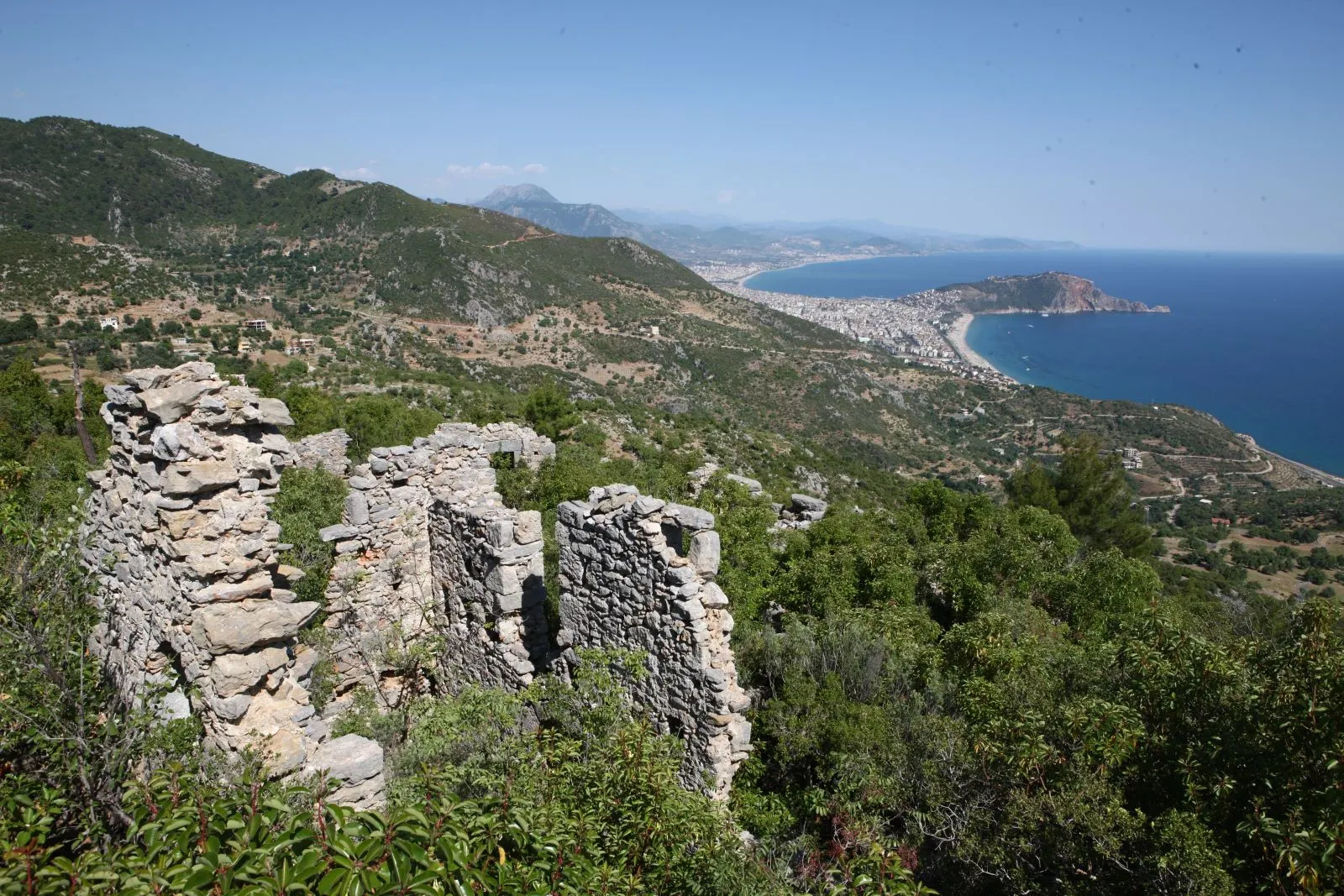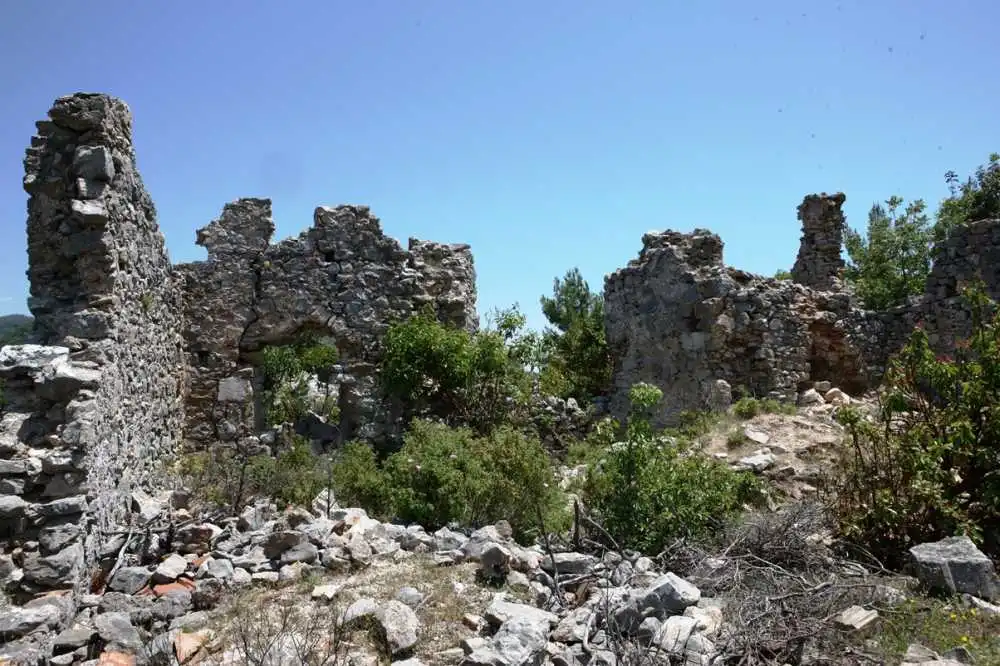Hamaxia Ancient City
Description
The ancient city in Elikesik village, 12 kilometers northwest of Alanya, is within the borders of Pamphylia region. It is popularly known as Sinekkalesi. The ancient geographer Strabon mentions that the wood used for shipbuilding was obtained from the city, especially cedar trees were abundant, and even Antonius gave this region as a gift to Cleopatra. Both inscriptions and ruins show that the city was inhabited from the Hellenistic period until the end of the Byzantine period.
The inscriptions are mostly honor inscriptions with the names of certain families that lived in Hamaxia. Very few of the inscriptions mention the buildings in the city. According to the inscriptions, the cult area of Hermes and Serapis, the tower which is thought to be Hellenistic and two exedras (small buildings arranged in a semicircle) to the west of it, another exedra to the north of the city, a bathhouse, large and small tombs in the necropolis area and the city walls are the surviving remains of the city.
The city walls surrounding the city have been preserved especially in the north and west directions. A significant part of the ostoteks (ashtrays) and their fragments in the western and northern parts of the necropolis outside the city walls are exhibited in the Alanya Archaeological Museum. It is known that the city continued its life as a small and not rich community of Coracesium between 100-200 AD.
Short Description
The ancient city in Elikesik village, 12 kilometers northwest of Alanya, is within the borders of Pamphylia region. It is popularly known as Sinekkalesi. The ancient geographer Strabon mentions that the wood used for shipbuilding was obtained from the city, especially cedar trees were abundant, and even Antonius gave this region as a gift to Cleopatra. Both inscriptions and ruins show that the city was inhabited from the Hellenistic period until the end of the Byzantine period.




